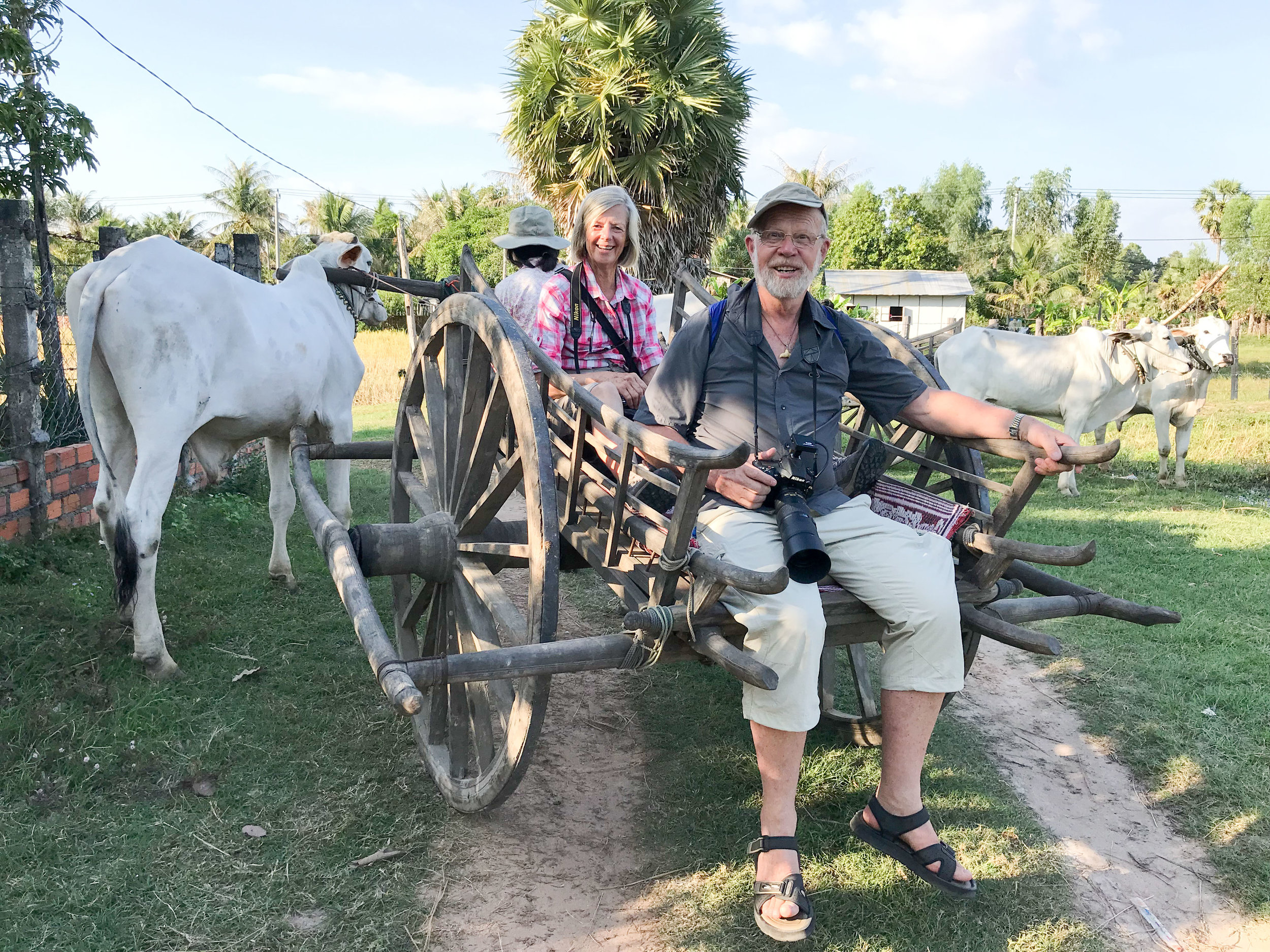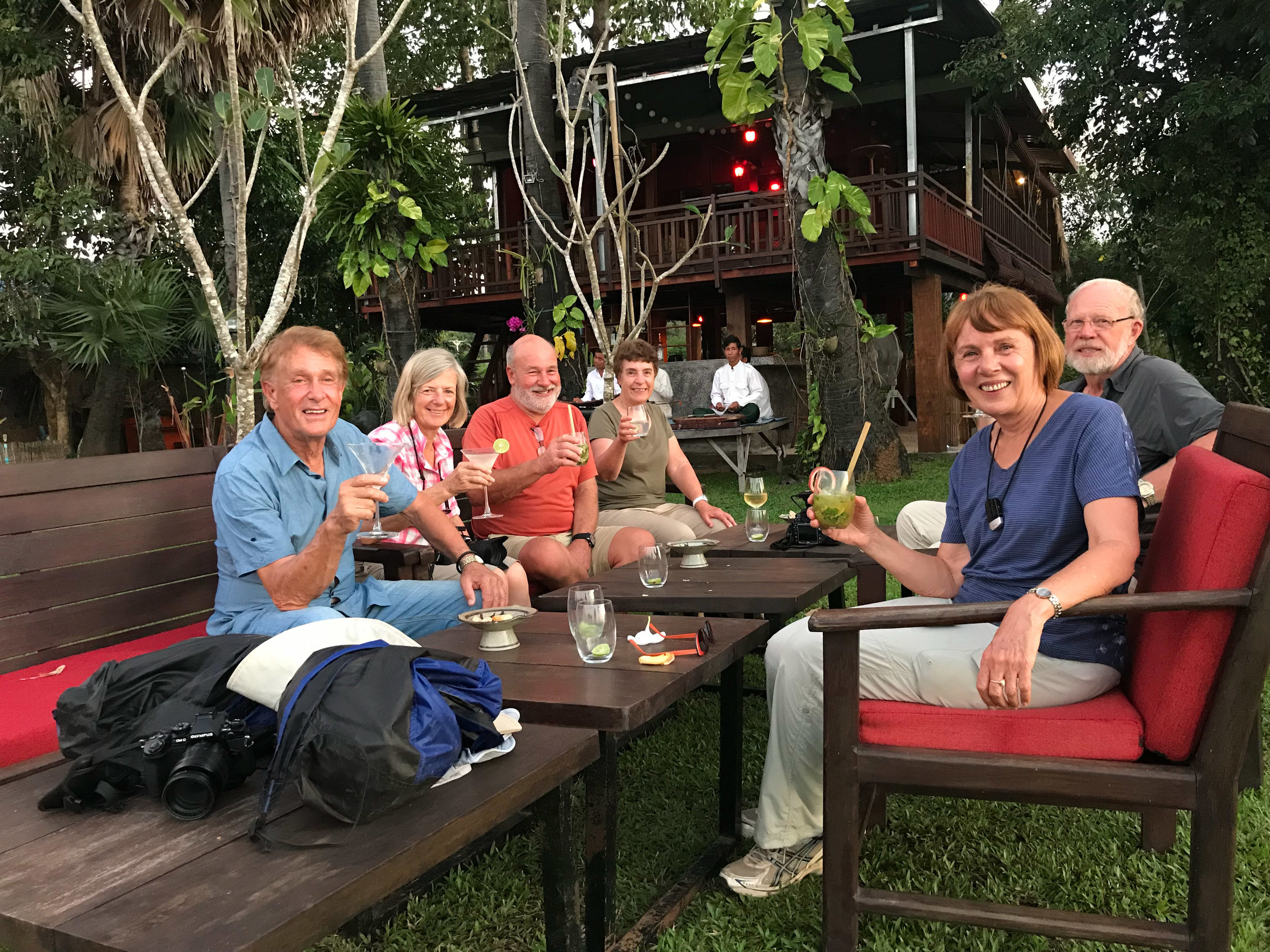We arrived at the eastern gate of Angkor Wat just after 05:00 and were initially the only people in sight. In semi-darkness we walked around towards the western entrance to await the sunrise. We were positioned so that the temple would be reflected in the section of moat in front of us. The sunrise was a bit of a non-event but heralded the arrival of the masses.
The Angkor Wat (“Small Imperial City”) temple is regarded as the largest religious complex in the world and is considered as the crowning achievement of Khmer art and architecture.
Angkor Wat was built as a Hindu Temple during the 12th century by King Yuryavarman II. The complex, dedicated to the Hindu god Vishnu is contained within a rectangle 1.5 km x 1.3 km although the central sandstone temple only occupies about 5% of that area.
The five towered sanctuary with each tower shaped in the form of a lotus bud stands in the middle of the complex. The uppermost level has the 42 m tall grand central shrine surrounded by axial galleries with four smaller towers rising at the corners. These galleries show the corbelling (as opposed to ‘keystone’) technique used by the Khmers for building vaulted ceilings.
We spent a good deal of time meandering along the wall galleries around the temple’s perimeter inspecting the 600 m of bas-reliefs depicting scenes from the Hindu epic Mahabharata. These images feature hundreds of brave weapon-bearing warriors engaged in furious combat during the Battle of Kurukshetra. There were also carvings of hundreds of sensual apsaras (angels) each one different from the next having variations in ornate jewellery and hairstyles.
After waiting in a queue for half an hour, we climbed the steep staircase to the central sanctuary to gain a broad view of the whole complex and the intricacy of the delicately carved stonework that abounds everywhere. The main shrine features images of the Buddha reflecting the Buddhist influence that eventually displaced Hinduism in Cambodia. Some heads of Buddha were stolen during colonial times and sold on the black market to European and other overseas collectors of antiquities.
One intriguing small area encountered was the Hall of Echoes where only very low frequency sounds like banging on one’s chest gave any discernable echo.
The visual input from just five hours of exposure to this ‘Eighth Wonder of the World’ is almost too much and one becomes mentally exhausted just trying to comprehend the time and effort that went into thirty years of building the temple. Although there’s been much conjecture, archaeologists still don’t know how the millions of tonnes of sandstone was lifted to such heights with some blocks known to be three or more tonnes.
We exited via the Terrace of Honour through the western gate and crossed the causeway which had balustrades carved in the form of giant nagas (serpents).
Whilst leaving at this stage, it now being 9:00 the crowds indicated to us why we’d been advised to come at such an early hour.
The Angkor Wat Temple receives about four million visitors a year and the tourist value to Cambodia is presently around one billion US$ per year.
We returned to our hotel for brunch and then had a twenty-minute helicopter flight in the late morning over the Angkor area. This flight was spectacular and gave us some further insight to the incredible nature of this archaeological wonderland. From the air we able to see how vast the area was and we could see the interlinking between the numerous waterways and ancient roads. Our flight took us down to the northern extremities of Tonle Sap Lake and we could see all the floating village homes that we’d passed through yesterday.
In the afternoon we did a journey of discovery through the rural landscape and visited some villages where tourists seldom venture.
We visited a Buddhist monastery where blessings from the monks were offered and we participated with passive enthusiasm.
At a small rural home we had coconut milk and were shown how to weave a fish from pieces of coconut palm leaf. Our group all performed dismally and needed the expert help of the locals to achieve a reasonable end-product.
A ride in an ox cart took us down to the shores of the huge rectangular artificial lake called the West Baray. The lake was dug by hand in the 12th century and measures 2 km x 8 km.
We traversed the lake in a wooden boat and on arrival at the far shore were greeted with icy cool face towels and champagne.
We then walked a short distance to our travel agent, About Asia’s villa Chandara where we relaxed with cool drinks and watched the sunset. On the way we passed a school which is sponsored by About Asia.
The culmination of the night was a tasty open-air dinner served while listening to traditional Khmer musicians playing on drums, a bowed single stringed sol and two instruments similar to xylophones.
After a wonderful afternoon’s entertainment we headed home to prepare for our long six hour trip southwards tomorrow to Phnom Penh.











